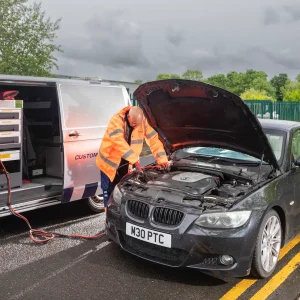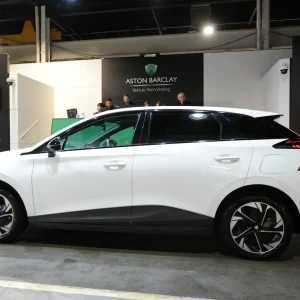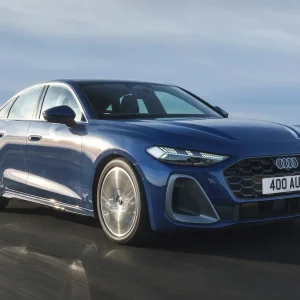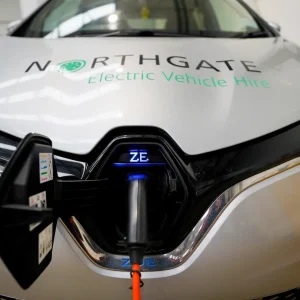There’s a world of difference between the telematics insurance offered in the consumer car market and the products that are offered in fleet. The ‘black box for lower premiums’ gig is now more or less the de facto way for young drivers to get cover and, although they’ll normally have a behind-the-scenes partnership with a telematics firm, everything goes through the insurer as far as the customer is concerned.
The same cannot be said of the B2B sector. As a rule, businesses are required to buy telematics and insurance from separate providers, rather than purchasing a single package, then work with an insurer that will factor the data into future policies. Sharpen your practices, cut your accident rates and, hey presto, cheaper premiums.
Reducing risk
In the past, fleets have used telematics in the interests of improving fuel economy and keeping tabs on vehicles, but sources say issues like risk and accident rates have recently become bigger motivators. By the same token, business insurers are waking up to the concept of telematics and a greater number of them are increasingly factoring it into fleet policies.
Beverly Wise, sales director at TomTom Telematics, explains, “We work with a broker and insurance business that will only offer insurance to fleets providing they have telematics fitted. The broker will then look at setting a fixed price, and say. ‘Providing you fit this, we will actually work with you to reduce your insurance premiums year on year,’ which is quite novel, because when it comes to fleets, most insurance companies are obviously looking to increase the premiums.”
As Wise suggests, the practice doesn’t work in the same way as in the consumer market, where you get an automatic discount for shouldering a black box. Fleets are required to show proof of action and improvement if they want cheaper premiums
“It seems unlikely that an insurance company would say, ‘You put telematics in; great, we’ll give you a 10% reduction’,” says Andy Walters, managing director of Quartix. “They do that for young private drivers, but they won’t do it for fleets until they’ve got proof of it being properly managed and of driving scores improving.”
He continues, “With a fleet that’s got 1,000 vehicles, the bottom line is that you have every risk imaginable. So it’s not immediately obvious that you are going to improve the risk profile just by having telematics. If it’s a company that’s got, say, 500 or 1,000 vehicles, and they’re broken down into supervisors, who may have ten or 20 guys reporting to them, it’s much more about how those supervisors are using the tracking system for reducing risk. Are they monitoring how the drivers are doing, and are they giving their drivers feedback and making sure that behaviours change? Insurance companies want to
see that.”
Clearly, telematics is not an instant solution and there is a massive onus on the business to react to the data, regardless of whether the end game is lower premiums.
“In our experience, unless the fleet is actually prepared to contribute towards it, one of the biggest issues companies need to consider when they’re putting telematics in is: are you going to act on that information? Because not doing so is worse than not having it in the first place. They have to monitor it and then they have to action against what they find,” says Peter Golding, managing director of Fleetcheck.
Ignorance could cost you
The same applies to those that go for a telematics/insurance combo looking for cheaper premiums. Ignore the data and it could cost you. As Wise explains, “If you just put it in and leave it, you are not going to see any benefits, and the insurance company would look and say, ‘You’ve not taken any action or looked at any recommendations around how you can improve your drivers’ behaviour or reduce your risks’, therefore, potentially, they could put your premiums up.”
“I’ve seen numerous fleets that have invested in telemetry across the spectrum and they’ve continued to crash cars,” adds Michael Walton, business development director at Masternaut. “Not only that, one thing that they don’t do well is notify the insurer when they have a claim. The average fleet’s first notification of loss (FNOL) is about eight to nine days, which means, on average, it takes eight days for a fleet manager to tell the insurance company he’s had a crash; it’s outrageous.”
A more efficient process
Although there’s no guarantee it will save your claim, Walton says that, done properly, telematics can render the post-accident clean-up more efficient, leaving the business with a much slicker track record. “Claims-management companies talk about the golden hour, which is the hour following an accident when you need to get hold of the details of the crash and all the parties involved,” he says. “If you can get in contact with those people and start to resolve the claim immediately, the savings are enormous.

“Telematics can assist with this in two ways: it can have automated event notification so that, when the vehicle’s in a crash, the telemetry contacts the claims-management company. Also, you’ve got the data involved in the crash to actually defend a claim – or, if you know you’re guilty, pay the claim as quickly as possible. It’s a combination of claims notification and claims validation.”
Worth a conversation
Don’t assume that insurers will automatically take telematics data into account, though. It isn’t universally acknowledged and, despite the benefits associated with combining the two, it’s worth a conversation with the insurer or the broker before a policy begins.
“The trouble is that a lot of insurers wouldn’t know what to do with the data and a lot of brokers wouldn’t necessarily see the importance of some of the data that’s been collected,” says Walton. “For the larger fleets, it’s normally the case that the customer goes to the broker, the broker goes to the market and there’s not necessarily much mention of telematics when they actually get the insurance quotation. That’s not exclusive, but it’s certainly the case that insurers are reasonably unsophisticated in their approach to companies that have got telematics.”
Grey fleet
However, pair up with a company that’s willing to take the data into account, and the knock-on effect of buying telematics to reduce your premiums is tenfold, according to Golding. “There are a million other benefits that fleets get from it,” he says. “Grey fleet: you can use it very quickly and simply to record business and private mileage, while people using their own cars can prove which journey’s for what. I think the benefits of telematics really come on things like company supply vehicles, when the fleet operator has the responsibility of ensuring that a vehicle not only is being properly driven, but that the information is available on myriad different things.”
“I’ve seen numerous fleets that have invested in telemetry across the spectrum and they’ve continued to crash cars.”
“You’re offering the fleet manager data and analysis to help them reduce risk,” adds Walton. “You’re not going to avoid claims, because time on road is enormous for some of these fleets. but what you can do is work with a problematic driver. You could have a bursary towards risk management, which involves getting driver training and identifying poor drivers.”
Changing attitudes
Ultimately, it will depend on your business and employees, but the old adage of the black box as the unwanted spy in the cab represents an attitude that’s on the turn. According to Golding, businesses and employees are generally acknowledging the upsides, “I think the technology is so well established now that the Big Brother argument is not used very often. The unions are supportive of it for the large organisations, because they recognise that they’re working.
“I know of a case where somebody fell ill in a van – they were able to track this person down and he’d had a heart attack. Had the vehicle not had a tracker fitted, they could have died. Everyone assumes that you can just ring up, but if you can’t answer your mobile phone, it does give some reassurance that you can actually retrieve the individual.”
Wise believes there’s still work to do when the systems are fitted to perk cars, but there’s now little issue with vans. “I think LCVs are more tools of the trade, so telematics is seen much more as an enabler, rather than a spy in the cab, because drivers see the benefits of being able to get orders directly to their vans, being able to give their customers an ETA. Really using it as a digital transformation, being able to be a mobile workstation for your company, and not having to continually go back to get the next batch of orders,” he says.
“I think the challenge is in the passenger car market, where the vehicles are provided more for status of position, and maybe viewed as a perk rather than a tool of your trade. So we do still see some of that ‘I don’t want to be tracked’.”





